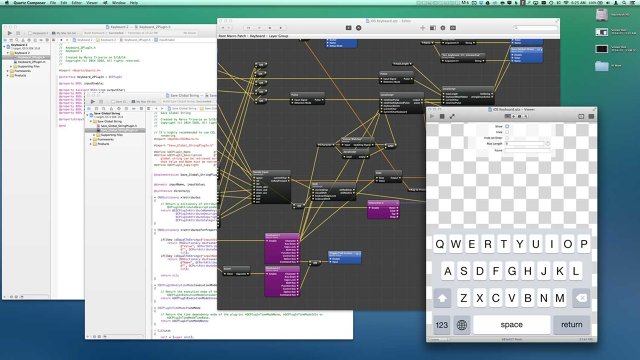THE DESIGN AGENCY OFFERS AN IMPROVED VERSION OF ORIGAMI, THE OPEN-SOURCE UX PROTOTYPING TOOL FACEBOOK RELEASED EARLIER THIS YEAR.
A few months ago, Facebook released a bit of open-source code called Origami, which lets designers create and test user interfaces without any coding.
Now, Ideo has released a free sequel. The design firm calls it Avocado, and it builds on the functionality of Origami, creating an even faster UX prototyping tool. "We wanted to build Avocado as something for our designers to be useful for them, and then put it out there to see if it’s helpful to others," explains Design Director Chris Nyffeler.

If Origami provides the Lego blocks for a prototyping interface, Avocado provides fully formed Lego kits. “We don’t want to reinvent components from scratch every time,” explains Avocado creator, and Ideo interaction designer and software engineer Marco Triverio.
For Ideo, Avocado was a natural extension of its rapid prototyping process. The design firm has a fierce addiction to Post-it notes, sketching out ideas to get at the very best design. Avocado was a way to refine the firm's rapid prototyping--to create that sweet spot between quick and pretty.
Origami sits on top of Apple’s age-old Quartz Composer software, and Avocado sits on top of Origami. Avocado contains a few common user interface components that make building prototypes quicker. Among them: a carousel interface, which creates a framework for photos you swipe through left and right, and animations like jiggling, jumping, and pulsating, which are extremely popular across interfaces. Each template--called a "patch"--is as easy to implement as dragging and dropping into your Quartz Composer desktop. From there, you link the media assets (like images) you’d like to manipulate, and use controls like sliders and nobs to tweak the intensity and nuance of the core animation. “You can code that animation, but you would need the understanding of 2-D and 3-D transformations,” Triverio says, referring to the deep understanding of geometry needed to animate well within code. “Avocado abstracts the complexity behind creating such an animation. It gives you simple controls.”
The resulting creation isn't a true app. But it is a detailed, full-motion mockup of how an interface could work. In this sense, Avocado projects sit halfway between Post-it mockups and fully functional coded applications. They're meant to prove or iterate a concept before you invest in actually building a piece of software.
Source:http://www.fastcodesign.com/3031560/ideo-releases-a-new-photoshop-for-interaction-design

